Thermal Storage Using Metallic Phase Change Materials for Bus Heating—State of the Art of Electric Buses and Requirements for the Storage System
Abstract
:1. Introduction
2. State of the Art of Electric Buses
2.1. Electric Buses in General
2.1.1. Common Vehicle Types
2.1.2. Electric Architecture
2.1.3. Battery Systems Used in Electric Buses
2.2. Charging Strategies for Electric Buses
2.2.1. Overnight Charging
2.2.2. Opportunity Charging at Final Stops
2.2.3. Opportunity Charging at Multiple Stops
2.3. Heating Systems for Electric Buses
2.3.1. Fuel Heater
2.3.2. Electric Heater
2.3.3. Heat Pump
2.3.4. Thermal Energy Storage
2.3.5. Thermal Management Architecture
2.4. Challenges Regarding the Use of Electric Buses
3. Requirements for Thermal High-Performance Storage
3.1. Thermal Capacity and Performance
3.2. Long-Term Stability
3.3. Mass and Volume
- The roof of a bus, which offers lots of space, is typically used for components like the air conditioner/heat-pump and for energy storage, such as batteries. Furthermore, THS could be placed on the roof.
- Components like ticket machines are sometimes installed within the interior of a bus, leading to a reduction in the number of seats. Due to this, installing extra components within the interior does not seem to matter much.
- Seats above wheel cases are often less spacious compared to the other seats within a bus and therefore are often less comfortable for passengers. Replacing these seats with other components should therefore not matter significantly.
- The space below seats often is not used at all.
- Battery electric buses typically have a higher weight compared to diesel buses, leading to a reduction of the vehicle’s load capacity and therefore to a reduced number of allowed passengers. Comparing the EvoBus eCitaro (with 10 battery packs) with the regular Citaro (12 m standard-bus with two doors) as examples, the empty weight is 13,700 kg compared to 11,415 kg and the maximum number of passengers is 89 compared to 105. Therefore, mass seems very relevant for battery-powered buses [49,50,51,52].
- Mass affects energy consumption during traction. Since energy consumption correlates with the CO2 footprint and operating cost, the mass of the vehicle should be as low as possible.
3.4. Cost
3.5. Electric Connection
3.6. Thermal Connection
3.7. Efficiency
3.8. Maintenance
3.9. Safety
3.10. Adjustment
3.11. Ecology
4. Conclusions
- Current battery-powered electric buses have drawbacks compared to conventional diesel buses due to their high investment costs and limited range. The investment costs are typically double that of conventional diesel buses. The range is typically limited to below 300 km and becomes even lower when interior heating is required and electric heating systems are used for heating; in such a case, the range can be cut by more than half, which can lead to ranges that prevent electric buses from a year-round use. Because of this, the spread of battery-powered electric buses is currently very low (e.g., only 0.28% of buses within Germany are battery-powered).
- The described limitations mainly result from the use of costly battery systems, which can easily cost €100,000–200,000, about half of the overall cost of a conventional diesel bus.
- The charging of a battery-powered electric bus can either be done using “overnight charging,” which requires lower installation costs for the charging systems but requires high-capacity energy-storage systems. The other charging strategy is “opportunity charging,” which leads to higher installation costs for the charging systems but requires low-capacity energy-storage systems. Depending on the charging scenario, either high-energy batteries or high-power batteries should be used.
- The storage capacity and performance of a thermal energy storage system with metallic phase change material has to be easily adaptable since it is strongly dependent on the given scenario; storage capacities might vary between 11.7 kWh and 425 kWh, with the installed electric charging power varying between 60.7 kW and 235 kW.
- The long-term stability of thermal high-performance storage should allow for at least several thousand hours of use. However, maintenance is allowed to reach this, where the ease of maintenance for wearing parts should be considered.
- Mass and the associated gravimetric energy density is regarded as being more relevant than volume and the associated volumetric energy density since volume for additional components seems to be readily available in a bus; however, mass limits the maximum number of passengers and affects energy consumption for traction. The gravimetric energy density of THS should reach values higher than about 100 Wh/kg for extreme opportunity charging scenarios and values higher than about 180 Wh/kg for extreme overnight charging scenarios to be comparable with a conventional electric heater using electric energy from the traction battery.
- The integration into the thermal management architecture could either be done via integration into the airflow provided to the vehicle’s interior or via integration into the liquid cooling circle; however, integration into the liquid cooling circle is regarded as the preferred solution since most of the currently used heating systems are integrated into the liquid cooling circle. Thermal energy storage using metallic phase change materials could simply replace the current heating systems if integration into the liquid cooling circle is possible.
- The efficiency of a thermal energy storage system using metallic phase change materials should be as high as possible, namely in the range of 90% or more, if possible.
- The heat supply system of the storage system should ideally be adaptable to a DC intermediate circle with voltages of about 650 to 750 VDC; alternatively, a connection to a 400 VAC level could also be possible.
- The use of thermal energy storage using metallic phase change materials should aim to minimize the overall cost, which is made up of the manufacturing cost, energy cost, maintenance cost, and decommissioning cost.
- Thermal energy storage using metallic phase change materials should be designed in such a way that no safety issues, especially regarding burning or leakage of liquid metal can occur; also, it should be equipped with safety devices to prevent the system from overheating, for example.
- Ecological aspects must be considered when designing thermal high-performance storage: if possible, recyclable raw materials, no toxic materials, and no critical raw materials should be used; additionally, the energy costs during manufacturing should be as low as possible.
Author Contributions
Funding
Conflicts of Interest
References
- Kraftfahrt- Bundesamt (KBA). Fahrzeugzulassungen - Bestand an Kraftfahrzeugen nach Umwelt-Merkmalen; Kraftfahrt- Bundesamt (KBA): Flensburg, Germany, 2019. [Google Scholar]
- Knote, T. Ansätze zur Standardisierung und Zielkosten für Elektrobusse; Fraunhofer IVI: Dresden, Germany, 2017. [Google Scholar]
- Kraft, W.; Jilg, V.; Altstedde, M.K.; Lanz, T.; Vetter, P.; Schwarz, D. Thermal High Performance Storages for use in vehicle applications. In IAV - ETA Tagung; IAV: Berlin, Germany, 2018. [Google Scholar]
- Kraft, W. Metallische Latentwärmespeicher als Heizsystem für die Anwendung in Batterieelektrischen PKWs und Bussen; Hochschule für Technik - Seminar Erneuerbare Energien: Karlsruhe, Germany, 2019. [Google Scholar]
- Wikipedia. Vorfeldbus. Available online: https://de.wikipedia.org/wiki/Vorfeldbus (accessed on 22 January 2020).
- Wikipedia. Stadtbus (Fahrzeug). Available online: https://de.wikipedia.org/wiki/Stadtbus_ (accessed on 22 January 2020).
- Wikipedia. Regionalbus. Available online: https://de.wikipedia.org/wiki/Regionalbus (accessed on 22 January 2020).
- Wikipedia. Reisebus. Available online: https://de.wikipedia.org/wiki/Reisebus (accessed on 22 January 2020).
- Faltenbacher, M.; Eckert, S.; Kupferschmid, S.; Klingenberg, H.; Burkhardt, J.; Schärzel, C.; Kiepsch, M.; Ramme, J.; Knote, T.; Jehle, C.; et al. Marktübersicht Fahrzeuge und Infrastruktur - Programmbegleitforschung Bus; BMVI: Leinfelden-Echterdingen, Germandy, 2019. [Google Scholar]
- EvoBus GmbH. Omnibus - Der vollelektrische Mercedes-Benz eCitaro - Special Edition; EvoBus GmbH: Stuttgart, Germany, 2019. [Google Scholar]
- Valeo. Thermo AC/DC; Valeo: Gilching, Germany, 2017. [Google Scholar]
- Budde-Meiwes, H.; Drillkens, J.; Lunz, B.; Muennix, J.; Rothgang, S.; Kowal, J.; Sauer, D. A review of current automotive battery technology and future prospects. J. Automob. Eng. 2013, 227, 761–776. [Google Scholar] [CrossRef]
- Bünnagel, C. Interview mit Sven Schulz, CEO von Akasol; Busplaner.de: Munich, Germany, 2019; pp. 28–31. [Google Scholar]
- Batteryuniversity.com. BU-205_ Types of Lithium-ion. Available online: https://batteryuniversity.com/learn/article/types_of_lithium_ion (accessed on 19 February 2020).
- Akasol. Akasystem AKM CYC - Ultra-Hochenergietechnologie für Langstreckenanwendungen. Available online: https://www.akasol.com/de/akasystem-akm-cyc (accessed on 19 February 2020).
- Akasol. AKASYSTEM AKM POC. Available online: https://www.akasol.com/de/akasystem-akm-poc (accessed on 19 February 2020).
- Schwarzer, M. Linienbusse unter Strom. ZEIT ONLINE, Bde. %1 von %2. Available online: https://www.zeit.de/auto/2010-04/linienbusse-strom (accessed on 19 February 2016).
- Verkehrsbetriebe Hamburg-Holstein GmbH. Das zweite Leben der Elektrobus Batterien. Available online: https://vhhbus.de/second-life-energiespeicher/ (accessed on 8 April 2020).
- Berthold, K. Techno-ökonomische Auslegungsmethodik für die Elektrifizierung urbaner. Busnetze. Dissertation, Karlsruher Schriftenreihe Fahrzeugsystemtechnik, Karlsruhe, Germany, 2019. [Google Scholar]
- Cundill, M.; Watts, P. Bus Boarding and Alighting Times; Transport and Road Research Laboratory: Crowthorne, UK, 1973. [Google Scholar]
- Sonnakalb, M.; Tegethoff, W.; Försterling, S. CO2 basierte Air-Condition und Heizung für Stadtbusse; Abschlussbericht über ein Entwicklungsprojekt, gefördert unter dem Aktenzeichen Az: 23864 von der Deutschen Bundesstiftung Umwelt: Braunschweig, Germany, 2008. [Google Scholar]
- Eberspächer. Eberspächer Wasserheizung Hydronic. 2019. Available online: https://www.eberspaecher.com/produkte/fuel-operated-heaters/produktportfolio/wasserheizungen.html (accessed on 6 March 2019).
- UITP Bus Committee. Standardised On-Road Test Cycles - SORT. In Proceedings of the 54th UITP International Congress, London, UK, 20–25 May 2001. [Google Scholar]
- Valeo. Werkstatthandbuch Thermo Plus; Valeo: Gilching, Germany, 2018. [Google Scholar]
- Valeo. Werkstatt-Handbuch Thermo AC/DC; Valeo: Gilching, Germany, 2018. [Google Scholar]
- Bareiß, M.; Vorgerd, D. Thermomanagement für elektrisch angetriebene Stadtbusse. ATZ 2019, 121, 52–55. [Google Scholar] [CrossRef]
- Bundesamt für Justiz, Straßenverkehrs-Zulassungs-Ordnung (StVZO) - § 41 Bremsen und Unterlegkeile. 2012. Available online: https://www.gesetze-im-internet.de/stvzo_2012/__41.html (accessed on 7 April 2020).
- Jefferies, D.; Ly, T.-A.; Kunith, A.; Göhlich, A. Energiebedarf Verschiedener Klimatisierungssysteme für Elektro-Linienbusse; DKV-Tagung: Dresden, Germany, 2015. [Google Scholar]
- Valeo. RevoE; Valeo: Gilching, Germany, 2017. [Google Scholar]
- Konvekta, AG. CO2 Wärmepumpe für Elektrobusse; Konvekta: Schwalmstadt, Germany, 2017. [Google Scholar]
- Konvekta, AG. UltraLight 500 CO2 Wärmepumpe; Konvekta: Schwalmstadt, Germany, 2018. [Google Scholar]
- Wirtschaftswoche, Die Krux mit dem Kältemittel in Auto-Klimaanlagen. 26 Juni 2018. Available online: https://www.wiwo.de/technologie/mobilitaet/umweltbundesamt-warnt-die-krux-mit-dem-kaeltemittel-in-auto-klimaanlagen/22735826.html (accessed on 8 April 2020).
- Konvekta, AG. Datenblatt Ultralight 500 EM / 600 EM/700 EM - 2. Gen.; Konvekta: Schwalmstadt, Germany, 2018. [Google Scholar]
- Basile, R.; Scheid, H.; Tanke, D.; Moeseler, M.; Häring, R. Beheizungsstrategien für Elektrobusse. In Transport Innovation for Sustainable Cities and Regions (POLIS); Valeo: Brussels, Belgium, 2017. [Google Scholar]
- Lee, M.; Lee, H. Steady state and start-up performance charactersitics of air source heat pump for cabin heating in an electric passenger vehicle. Int. J. Refrig. 2016, 69, 232–242. [Google Scholar] [CrossRef]
- Miller, W. Laboratory examination and seasonal analysis of frosting and defforsting for an air-to-air heat pump. Ashrae Trans. 1987, 93, 1474–1489. [Google Scholar]
- Valeo. Heizsysteme. Available online: https://www.valeo-thermalbus.com/eu_de/Produkte/Heizsysteme (accessed on 17 April 2019).
- Valeo. Werkstatt-Handbuch REVO-E; Valeo: Gilching, Germany, 2016. [Google Scholar]
- Valeo. Wartungs- und Serviceplan REVO-E Wärmepumpe; Valeo: Gilching, Germany, 2017. [Google Scholar]
- Best, P. Entwicklung ener moudlaren und schnellladefähigen Wärmespeicherheizung für vollelektrische Stadtbusse. In 3. Tagung Fahrzeugklimatisierung; Haus der Technik e.V.: Essen, Germany, 2019. [Google Scholar]
- Kratzing, R. HEAT2GO - Entwicklung eines schnellladefähigen Latentwärmespeichers für die Beheizung von Elektrobussen; Fraunhofer Institut für Verkehrs- und Infrastruktursysteme IVI: Dresden, Germany, 2017. [Google Scholar]
- Grossmann, H. Pkw – Klimatisierung – Physikalische Grundlagen und technische Umsetzung; Springer: Berlin/Heidelberg, Germany, 2013. [Google Scholar]
- Climate-Data.org. Klima Winnipeg. Available online: https://de.climate-data.org/nordamerika/kanada/manitoba/winnipeg-982/ (accessed on 5 March 2020).
- Climate-Data.org. Klima Astana. Available online: https://de.climate-data.org/asien/kasachstan/astana/astana-491/ (accessed on 5 March 2020).
- Climate-Data.org. Klima Las Vegas. Available online: https://de.climate-data.org/nordamerika/vereinigte-staaten-von-amerika/nevada/las-vegas-723/ (accessed on 5 March 2020).
- Climate-Data.org. Klima Teheran. Available online: https://de.climate-data.org/asien/iran/teheran/teheran-198/ (accessed on 5 March 2020).
- Beekman, R.; van den Hoed, R. Operational demands as determining factor for electric bus charging infrastructure. In Proceedings of the Hybrid and Electric Vehicle Conerence, London, UK, 2 November 2016. [Google Scholar]
- Goebelt, R. TÜV Bus-Report 2018; Verband der TÜV e.V.: Berlin, Germany, 2018. [Google Scholar]
- Forster, O. Mercedes-Benz eCitaro - Ausfahrt auf leisen Sohlen. Busmagazin 2019, 7–10. [Google Scholar]
- Görgler, J. Mercedes-Benz Citaro (Euro 6) - Sparsam unterwegs. Busmagazin 2014, 6–10. [Google Scholar]
- EvoBus GmbH. Der Neue eCitaro - Technische Informationen; EvoBus GmbH: Stuttgart, Germany, 2019. [Google Scholar]
- EvoBus GmbH. Die Citaro Stadtbusse; EvoBus GmbH: Stuttgart, Germany, 2019. [Google Scholar]
- Verband Deutscher Verkehrsunternehmen (VDV). VDV-Mitteilung 2303 - Empfehlung zur Verhinderung von Brandschäden bei Linienbussen; Beka Verlag: Köln, Germany, 2012. [Google Scholar]
- Das Europäische Parlament und der Rat der Europäischen Union. Richtlinie 2001/85/EG des europäischen Parlaments und des Rates; Das Europäische Parlament und der Rat der Europäischen Union: Brusseles, Belgium, 2012. [Google Scholar]
- Das europäische Parlament und der Rat der europäischen Union. Richtlinie 95/28/EG; Das europäische Parlament und der Rat der europäischen Union: Brusseles, Belgium, 1995. [Google Scholar]
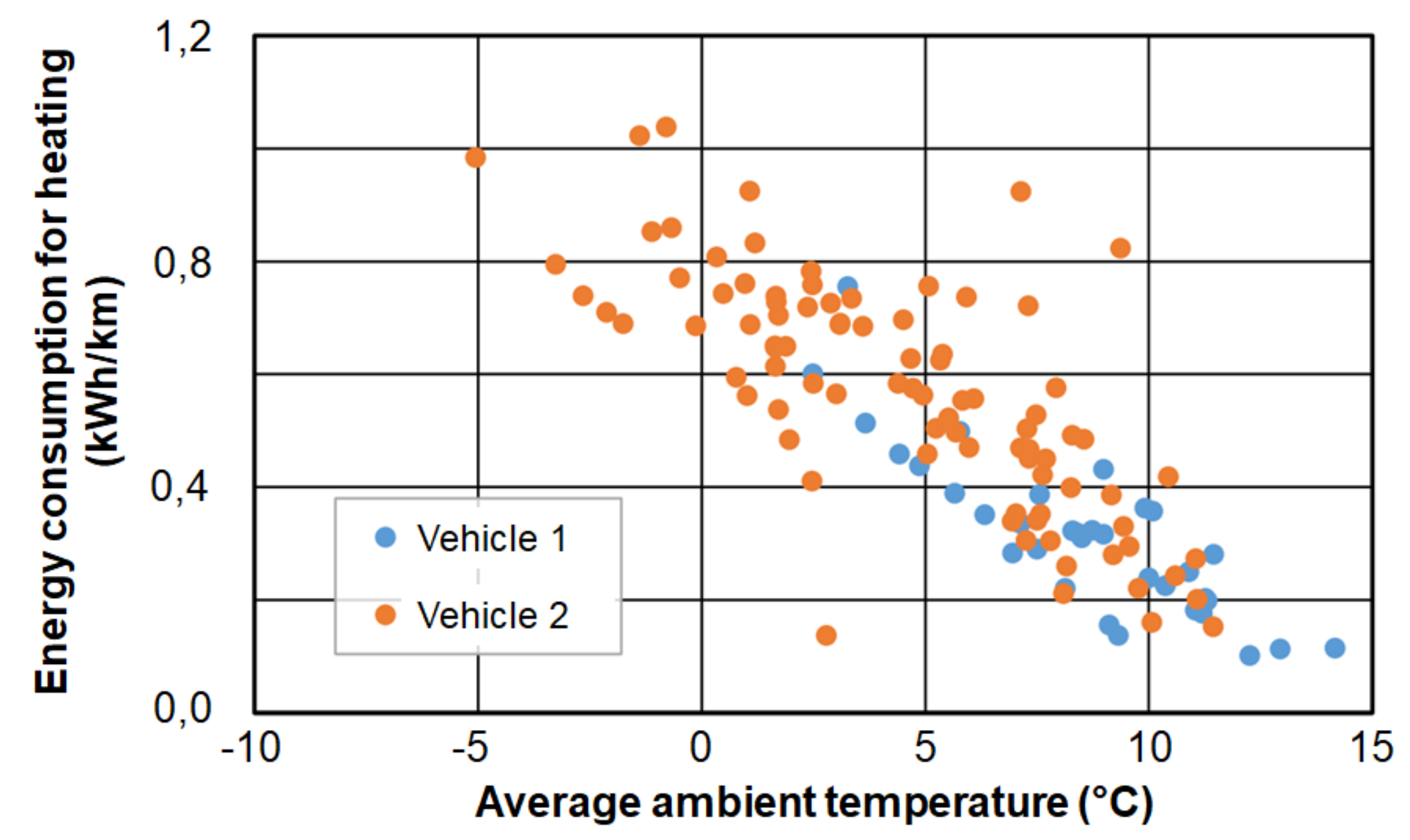
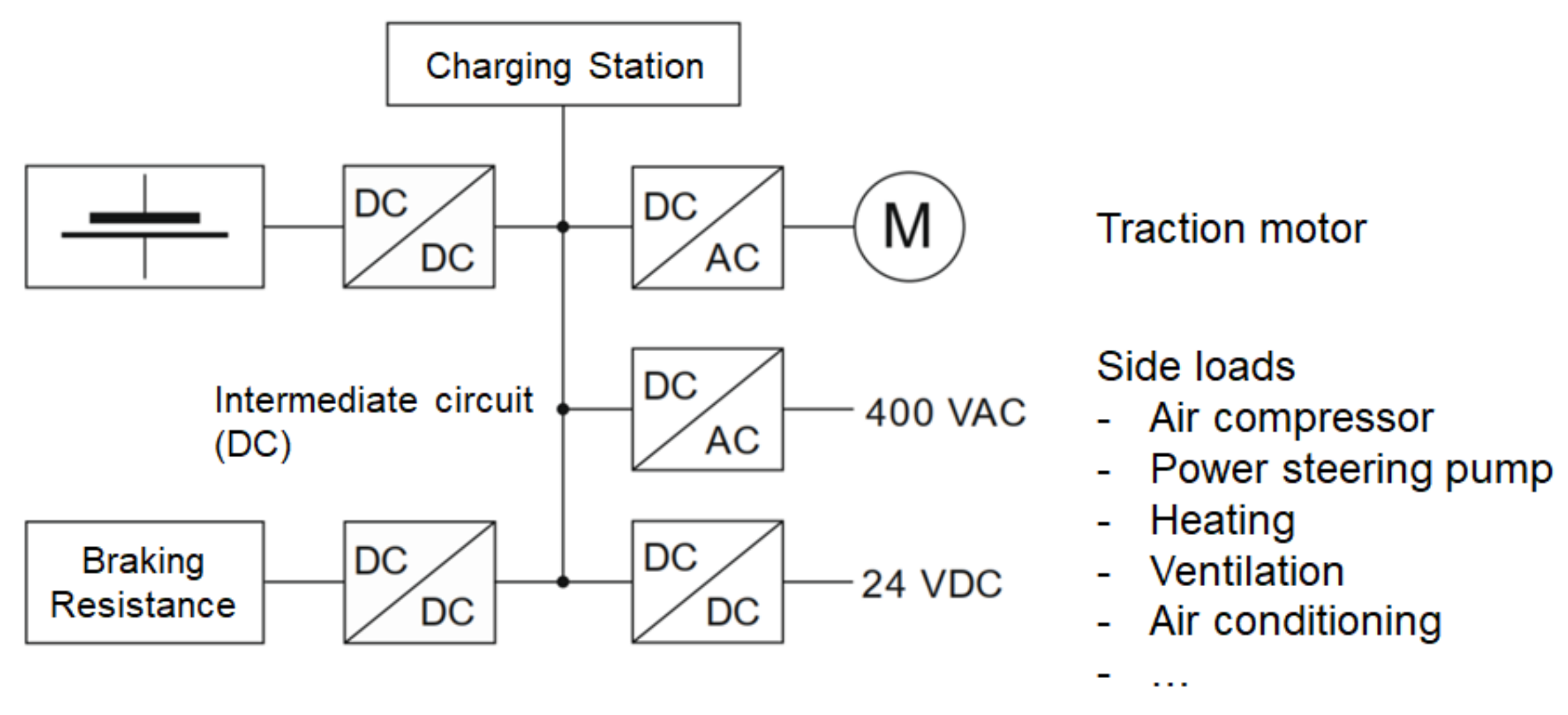

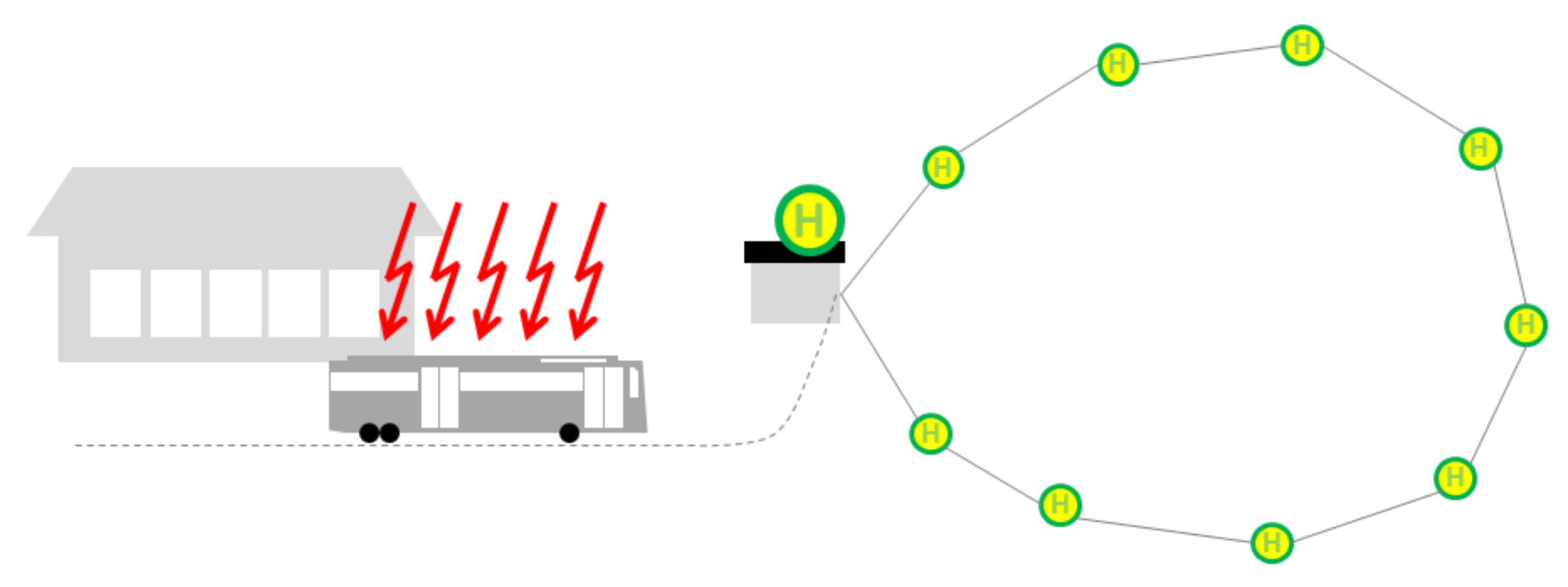
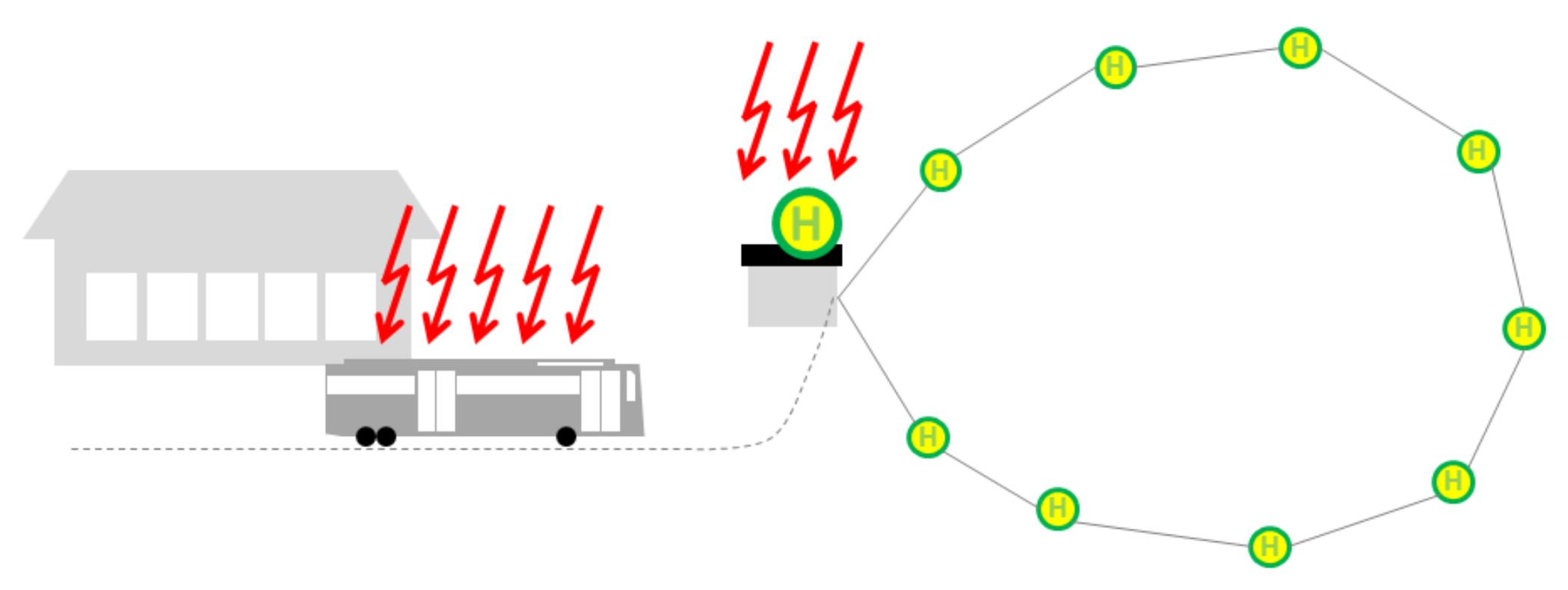
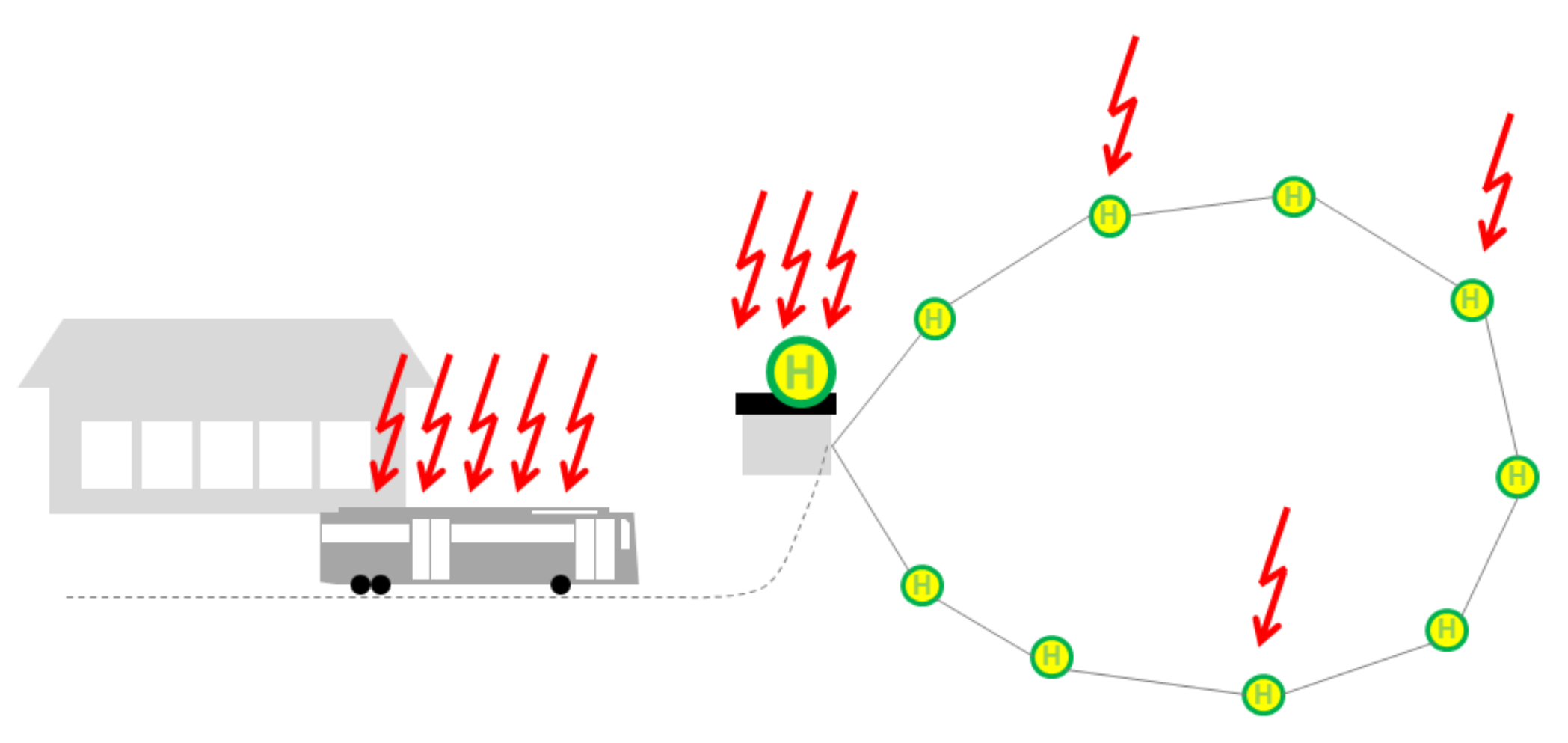
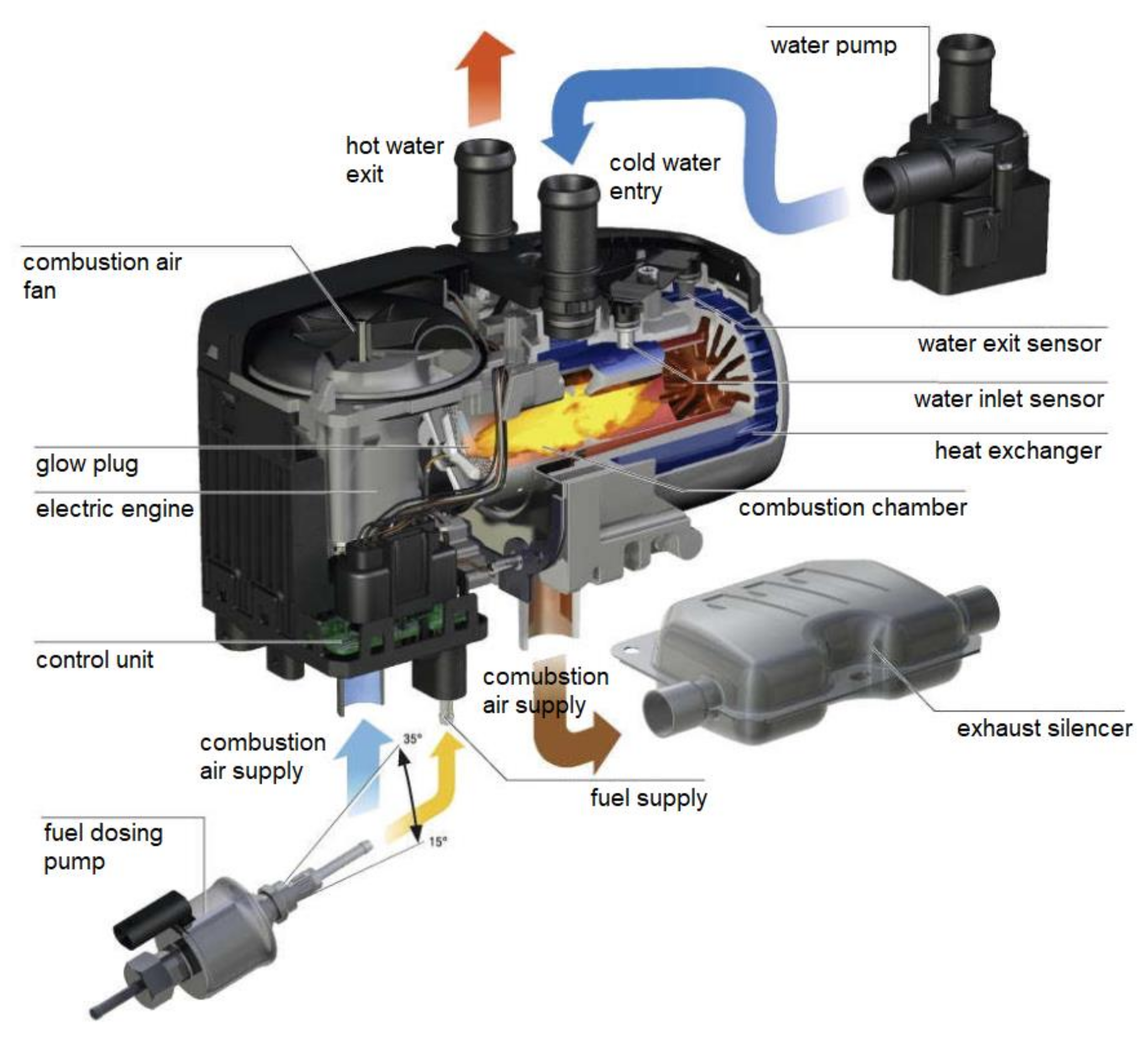
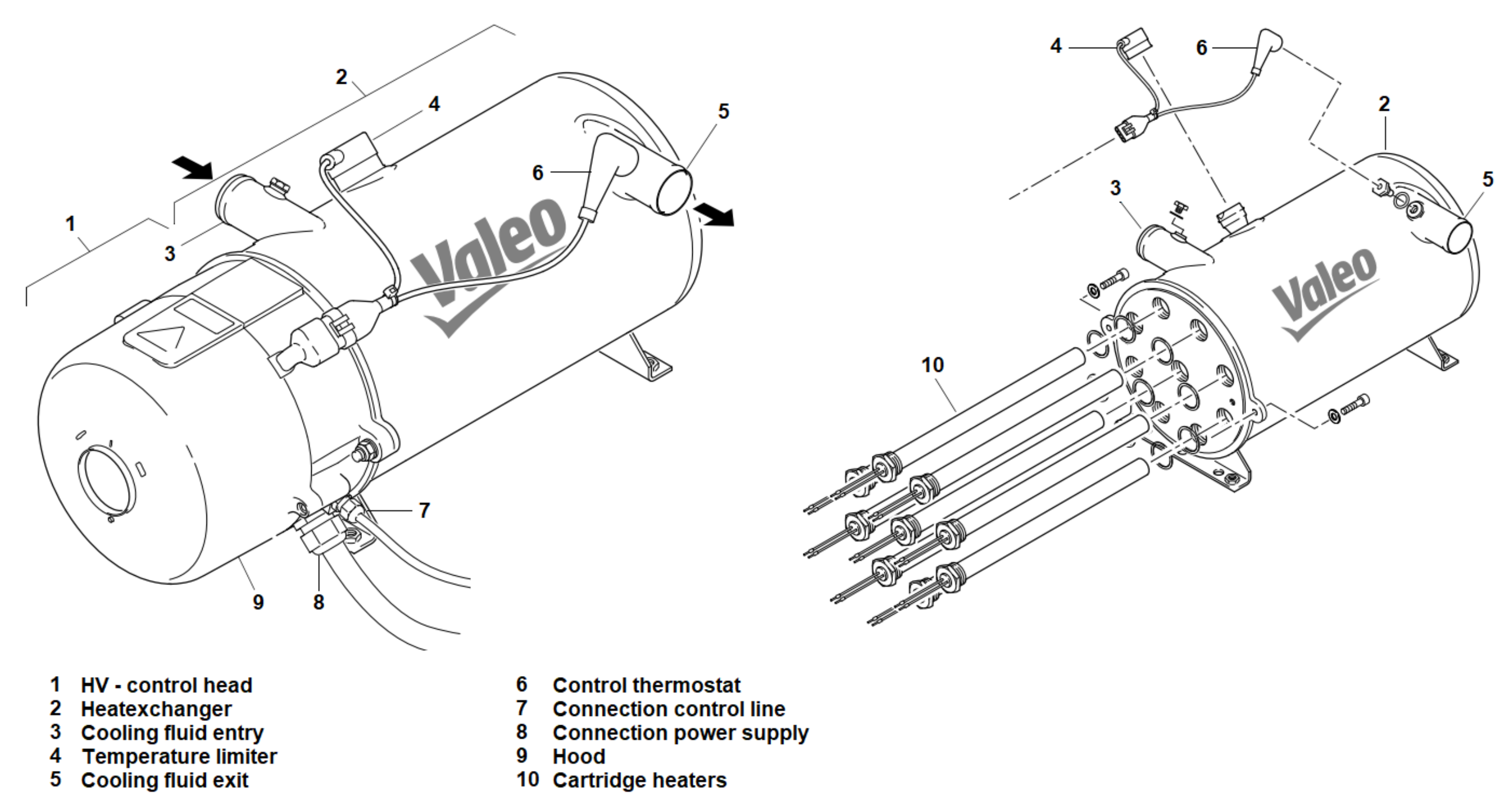
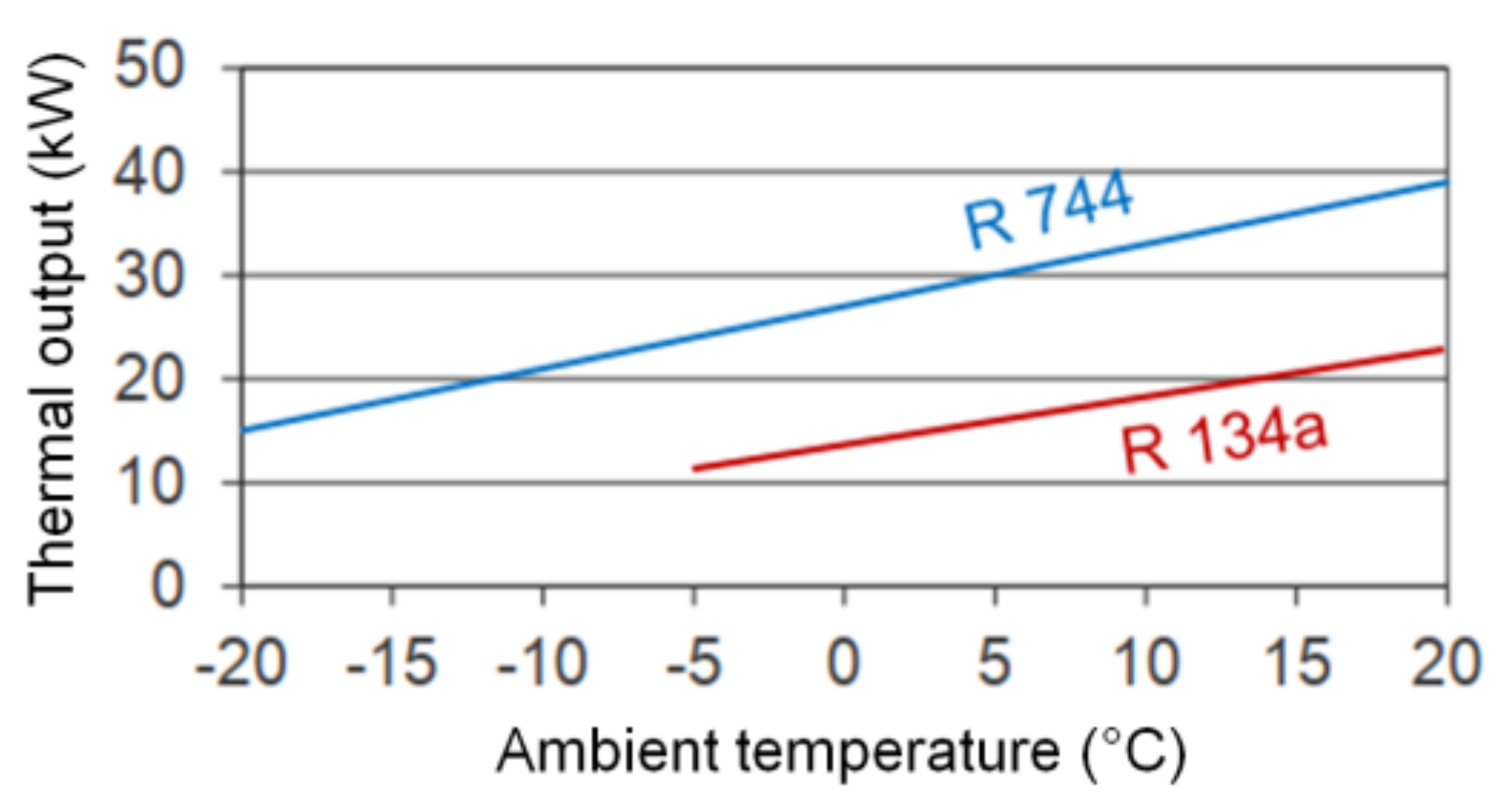
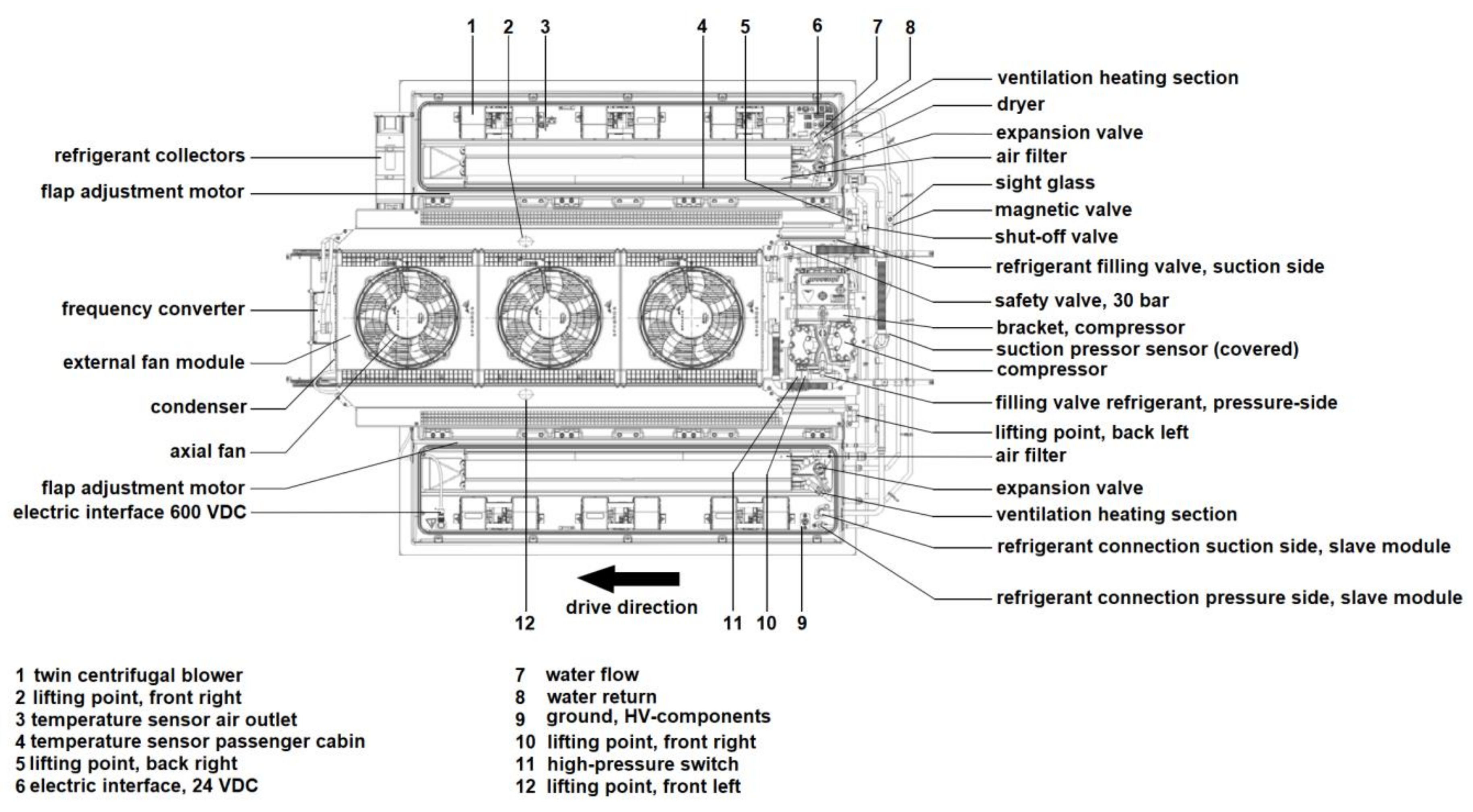

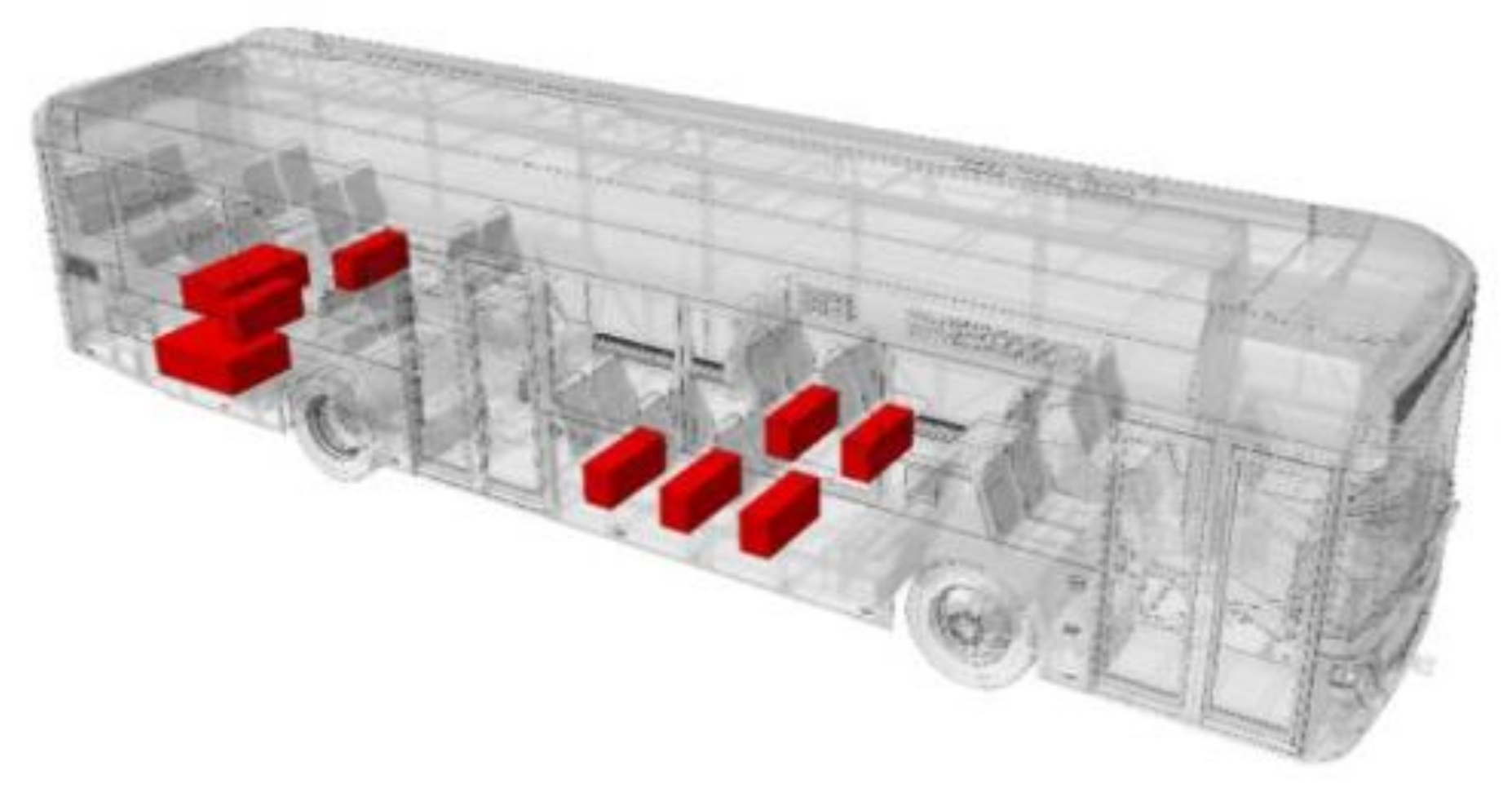
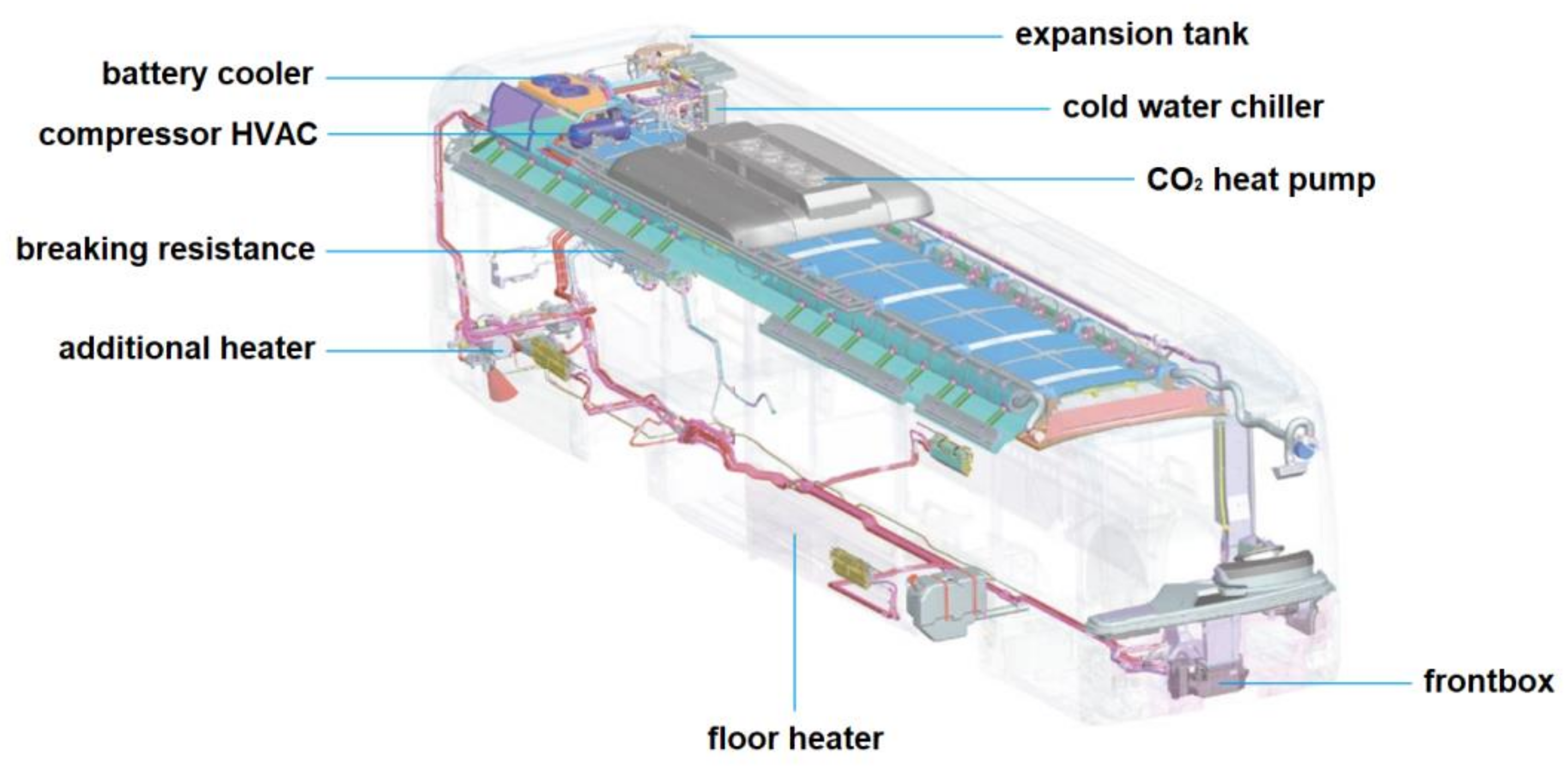
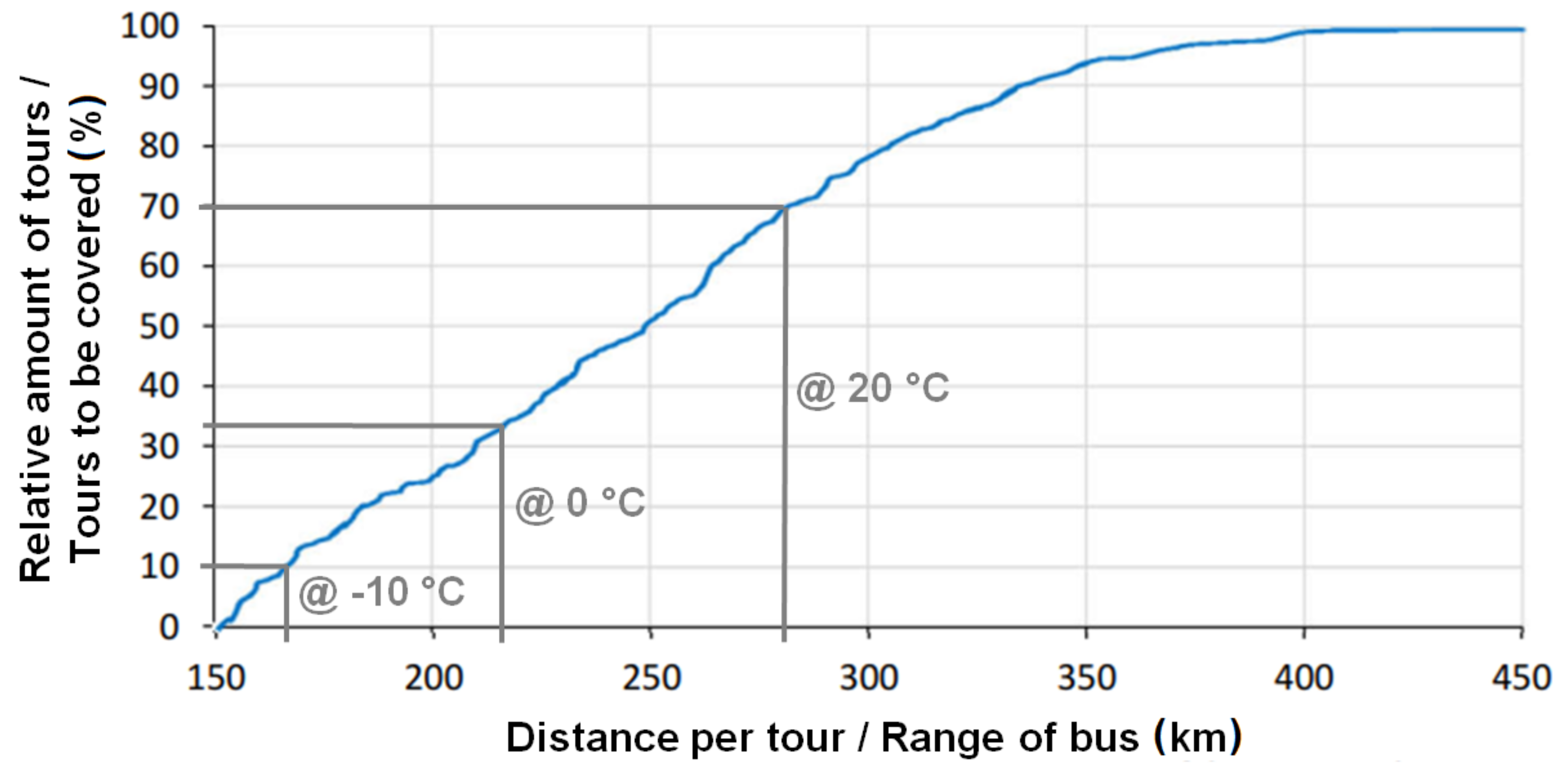
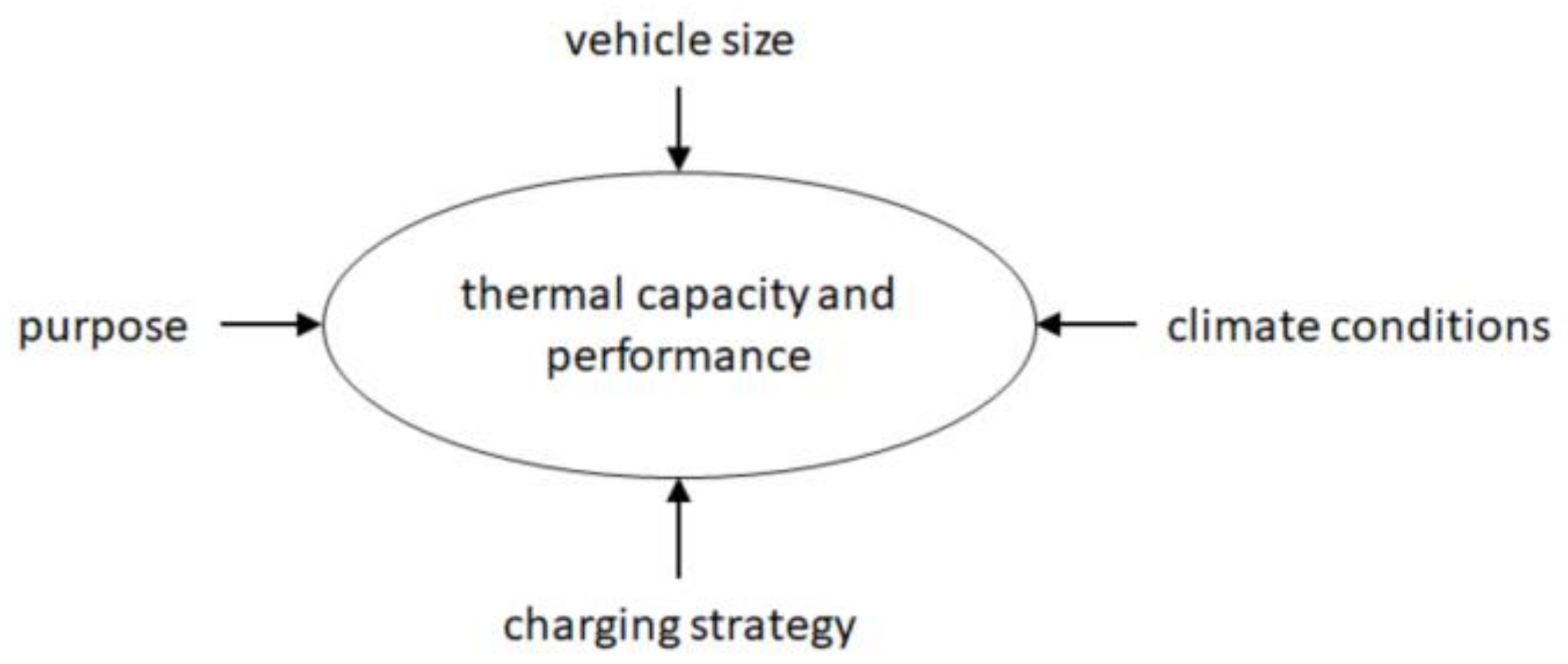


© 2020 by the authors. Licensee MDPI, Basel, Switzerland. This article is an open access article distributed under the terms and conditions of the Creative Commons Attribution (CC BY) license (http://creativecommons.org/licenses/by/4.0/).
Share and Cite
Kraft, W.; Stahl, V.; Vetter, P. Thermal Storage Using Metallic Phase Change Materials for Bus Heating—State of the Art of Electric Buses and Requirements for the Storage System. Energies 2020, 13, 3023. https://doi.org/10.3390/en13113023
Kraft W, Stahl V, Vetter P. Thermal Storage Using Metallic Phase Change Materials for Bus Heating—State of the Art of Electric Buses and Requirements for the Storage System. Energies. 2020; 13(11):3023. https://doi.org/10.3390/en13113023
Chicago/Turabian StyleKraft, Werner, Veronika Stahl, and Peter Vetter. 2020. "Thermal Storage Using Metallic Phase Change Materials for Bus Heating—State of the Art of Electric Buses and Requirements for the Storage System" Energies 13, no. 11: 3023. https://doi.org/10.3390/en13113023
APA StyleKraft, W., Stahl, V., & Vetter, P. (2020). Thermal Storage Using Metallic Phase Change Materials for Bus Heating—State of the Art of Electric Buses and Requirements for the Storage System. Energies, 13(11), 3023. https://doi.org/10.3390/en13113023




